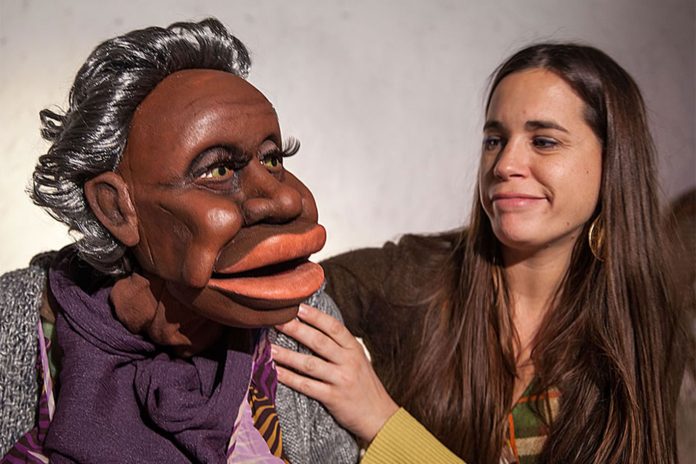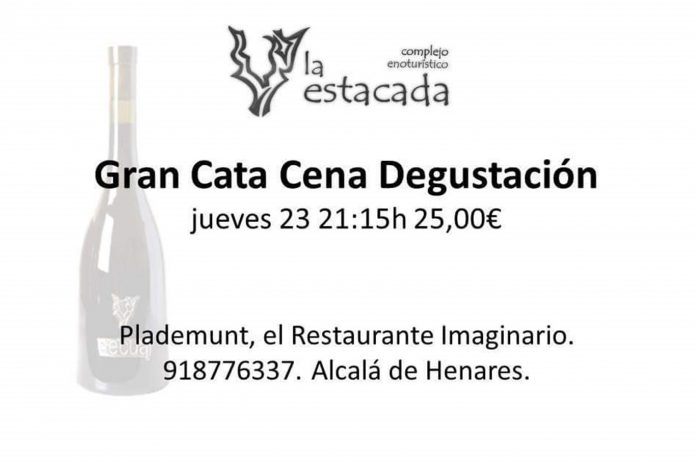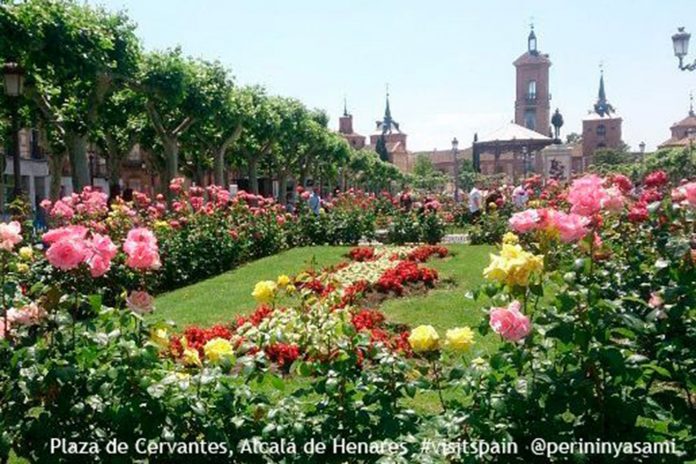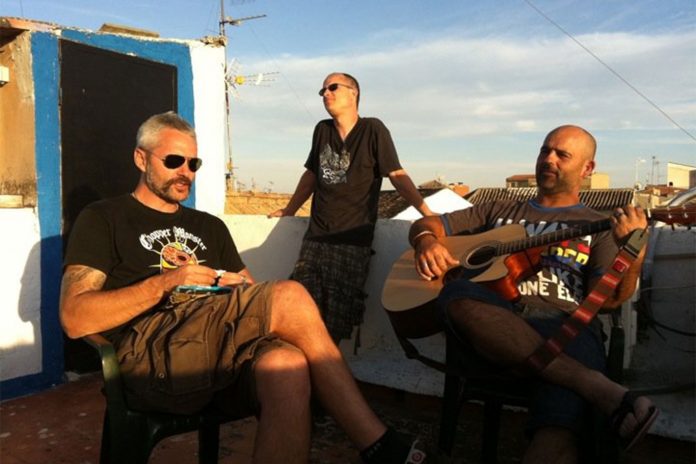Fernando Galván, rector de la Universidad de Alcalá y Javier Rodríguez, alcalde de Alcalá de Henares, han presentado esta mañana la programación del Festival de la Palabra, en un acto que se celebrará en el Paraninfo de la Universidad de Alcalá y que este año rinde homenaje a Eduardo Mendoza, Premio Cervantes 2016.
También han acompañado el acto el vicerrector de Extensión Universitaria y Relaciones Internacionales, José Raúl Fernández del Castillo, y la concejal de Universidad, Cultura, Turismo y Festejos, María Aranguren.
El Festival de la Palabra es una convocatoria para la creación literaria y la lectura que tiene como actividad principal la entrega del Premio Cervantes en el Paraninfo de la Universidad de Alcalá. Es un tiempo para la reflexión y el debate en torno a la lengua española y la difusión de la obra del autor premiado con este galardón.

El Festival de la Palabra, que organizan el Ayuntamiento de Alcalá de Henares y la Universidad de Alcalá, tiene como objetivo difundir y promover la lectura y la creación literaria a través de un programa de actividades en el que tienen una especial importancia aquellas que tratan sobre la vida y obra de Miguel de Cervantes, así como las que contribuyen a divulgar la vida y obra del escritor galardonado con el Premio Cervantes, principal reconocimiento de la lengua castellana, que, en su última edición, ha sido otorgado a Eduardo Mendoza.
Durante el mes de abril, el mes de los libros, el mes de Cervantes, el Festival de la Palabra despliega sus actividades con el propósito de contribuir a que la lectura sea el principal hábito cultural de los ciudadanos y universitarios de Alcalá. Para ello se ofrece una programación transversal que contempla actividades dirigidas a diferentes públicos (niños, jóvenes, universitarios, mayores, residentes en Alcalá, turistas…) que se celebran en espacios públicos (municipales y universitarios) y privados (librerías y lugares de encuentro).

Rodríguez Palacios ha destacado que el Festival de la Palabra supondrá el cierre de las actividades conmemorativas del IV Centenario de la Muerte de Miguel de Cervantes que ha propiciado la realización de decenas de exposiciones, funciones teatrales, festivales, actividades musicales, talleres para niños, cursos, y publicaciones con una participación que supera los 300.000 usuarios.
Asimismo, el primer edil ha hecho hincapié en el carácter “participativo” del Festival, ya que “es fundamental la participación de los vecinos y vecinas: jóvenes, niños y niñas, mayores. Desde el Ayuntamiento sumamos otras actividades como un certamen Gastronómico, una Feria del Vino, cuentacuentos, teatro, cine, música. Estamos encantados de trabajar conjuntamente con la Universidad: supone un camino que hemos iniciado de forma conjunta, peleando por la ciudad, y que nos va a llevar a situar Alcalá en un alto nivel: la palabra unida a la ciudad”.
El Festival dará comienzo el próximo sábado, 1 de abril, y hasta el domingo día 30 ofrecerá cerca de 135 propuestas que van desde coloquios, exposiciones, cuentacuentos, recitales poéticos, jornadas de diversa índole, proyecciones, teatro o talleres, entre otros. (Se adjunta programación completa)
Coloquio Elogio del olvido
Tras este acto, ha tenido lugar en la Sala de Conferencias Internacionales un coloquio para presentar el libro ‘Elogio del olvido. Las paradojas de la memoria histórica’ (Debate, 2017) con la presencia de su autor, David Rieff, y del ensayista y filósofo José María Ridao. El periodista José Andrés Rojo será el encargado de presentar y moderar el coloquio. La entrada es libre hasta completar el aforo.
El Festival de la Palabra, que cada año organizan conjuntamente la Universidad de Alcalá y el Ayuntamiento de Alcalá de Henares, es un espacio de reflexión y debate en torno a la lengua española, que en esta edición rinde homenaje al Premio Cervantes 2016, el escritor Eduardo Mendoza. Durante el mes de abril, el Festival de la Palabra ofrece una programación transversal para hacer llegar la literatura a todos los públicos.
El extraño caso del doctor Mendoza será la conferencia inaugural del Festival de la Palabra que pronunciará Félix de Azua, ensayista y miembro de la Real Academia Española. Tendrá lugar el lunes 3 de abril, a las 19:00 horas, en el Paraninfo de la Universidad.
David Rieff (Boston, 1952), licenciado en Historia por la Universidad de Princeton, es analista político, periodista y crítico cultural estadounidense. Sus artículos se han publicado en importantes medios como ‘The New York Times’, ‘The Washington Post’, ‘The Wall Street Journal’, ‘Le Monde’, ‘The Atlantic Monthly’, ‘Foreign Affairs’ o ‘El País’. Es autor de ‘Una cama para una noche’ (Taurus, 2003), ‘Crímenes de guerra’ (Debate, 2007), ‘Un mar de muerte’ (Debate, 2008), ‘A punta de pistola’ (Debate, 2011), ‘Contra la memoria’ (Debate, 2012) y ‘El oprobio del hambre’ (Taurus, 2016). Es hijo del sociólogo Philip Rieff y la famosa activista Susan Sontag, escritora y directora de cine fallecida en 2004 y una de las intelectuales más críticas e influyentes en la cultura estadounidense de la segunda mitad del siglo XX.
José María Ridao (Madrid, 1961), licenciado en Filología árabe y en Derecho. En 1987 ingresó en la carrera diplomática, que lo llevó a ejercer en Angola, la Unión Soviética, Guinea Ecuatorial y Francia. Ha colaborado en diversos medios de comunicación como la Cadena Ser o ‘El País’. En Galaxia Gutenberg ha publicado los ensayos ‘El pasajero de Montauban’ (2003), ‘Weimar entre nosotros’ (2004), ‘Elogio de la imperfección’ (2006), ‘Contra la historia’ (2009) y ‘Radicales libres’ (2011), las ediciones ‘Dos visiones de España’ (2005) y ‘Por la gracia de Dios: catolicismo y libertades en España’ (2008), así como las novelas ‘El mundo a media voz’ (2001) y ‘Mar muerto’ (2010), ‘Filosofía accidental. Ensayos sobre el hombre y el Absoluto’ (V Premio Internacional de Ensayo Josep Palau i Fabre, 2015). En su último libro publicado, ‘El vacío elocuente’ (2017) reivindica el talento literario y filosófico de Albert Camus.
Ver más
Programa del Festival de la Palabra 2017 de Alcalá de Henares




























































